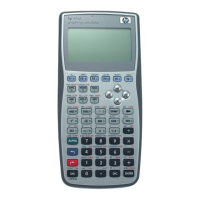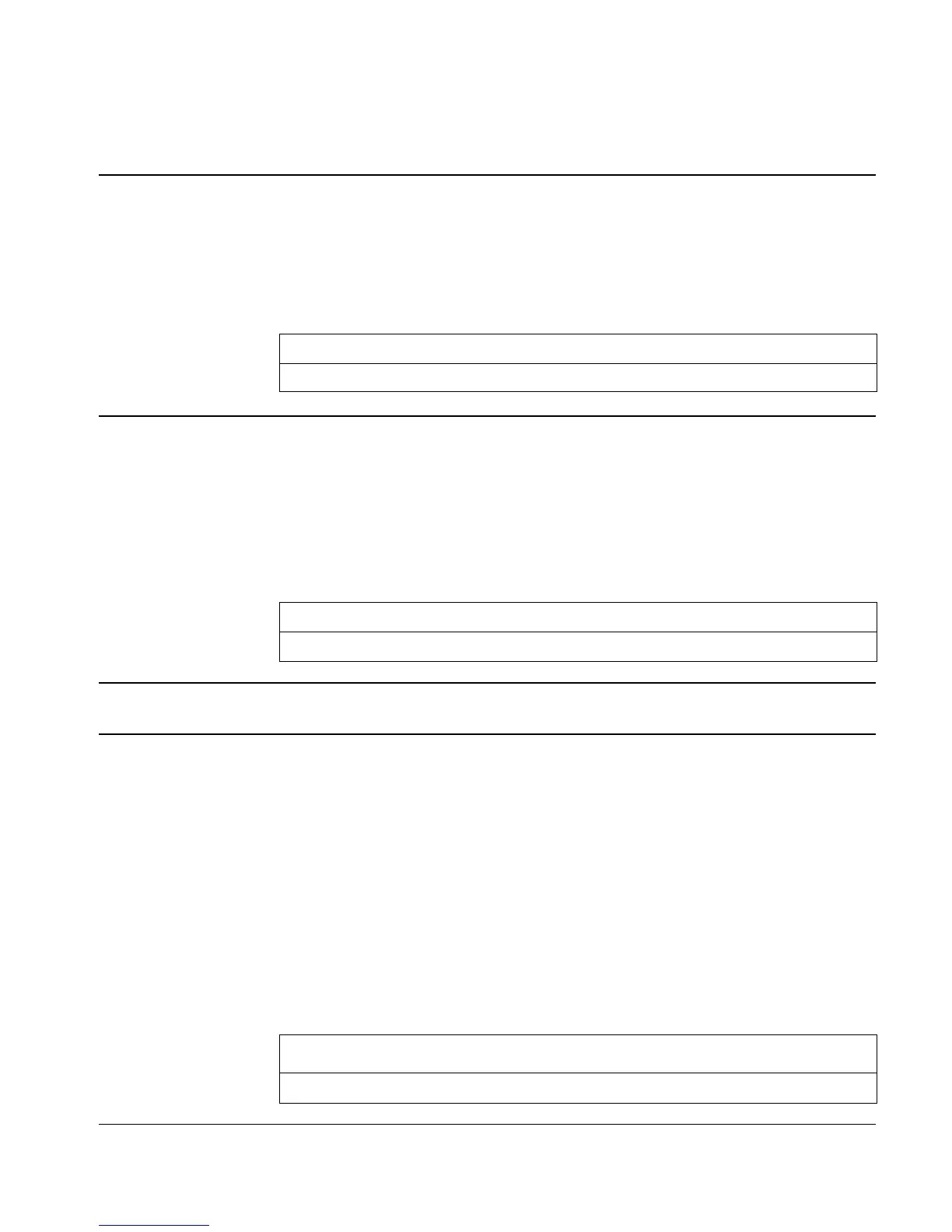Full Command and Function Reference 3-167
Access: …µ SLOPEFIELD
Input/Output: None
See also: BAR, CONIC, DIFFEQ, FUNCTION, GRIDMAP, HISTOGRAM, PARAMETRIC,
PARSURFACE, PCONTOUR, POLAR, SCATTER, TRUTH, WIREFRAME, YSLICE
SNEG
Type: Command
Description: Store Negate Command: Replaces the contents of a variable with its negative.
The named object must be a number, an array, an algebraic object, a unit object, or a graphics
object. For information on negation, see NEG.
Access: !°
MEMORY ARITHMETIC L SNEG ( °is the left-shift of the Nkey).
Input/Output:
Level 1/Argument 1 Level 1/Item 1
'name'
→
See also: NEG, SCONJ, SINV
SNRM
Type: Command
Description: Spectral Norm Command: Returns the spectral norm of an array.
The spectral norm of a vector is its Euclidean length, and is equal to the largest singular value of
a matrix.
Access: !Ø
OPERATIONS L L SNRM ( Ø is the left-shift of the 5key).
!´
MATRIX NORMALIZE SNRM ( ´ is the left-shift of the Pkey).
Input/Output:
Level 1/Argument 1 Level 1/Item 1
[ array ]
→
x
spectralnorm
See also: ABS, CNRM, COND, RNRM, SRAD, TRACE
SOLVE
CAS: Find zeros of an expression, or solve an equation with respect to a specified variable.
SOLVEQN
Type: Command
Description: Starts the appropriate solver for a specified set of equations.
SOLVEQN sets up and starts the appropriate solver for the specified set of equations, bypassing
the Equation Library catalogs. It sets EQ (and Mpar if more than one equation is being solved),
sets the unit options according to flags -60 and -61, and starts the appropriate solver.
SOLVEQN uses subject and title numbers (levels 3 and 2) and a “PICT” option (level 1) and
returns nothing. Subject and title numbers are listed in chapter 5. For example, a 2 in level 3 and
a 9 in level 2 would specify the Electricity category and Capacitive Energy set of equations. If the
“PICT” option is 0, PICT is not affected; otherwise, the equation picture (if any) is copied into
PICT.
Access: …µ
SOLVEQN
Flags: Unit Type (-60), Units Usage (-61)
Input/Output:
Level 3/Argument 1 Level 2/Argument 2 Level 1/Argument 3 Level 1/Item 1
n m 0/1
→
See also: EQNLIB, MSOLVER

